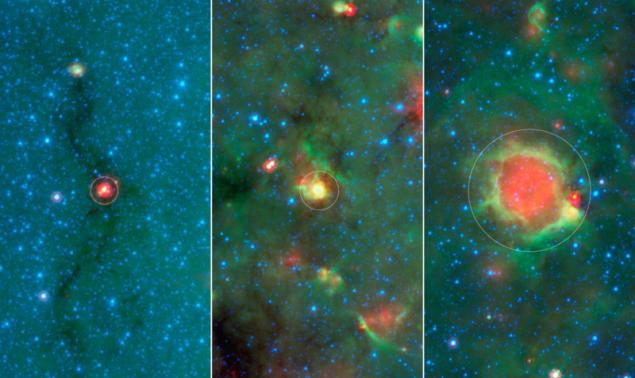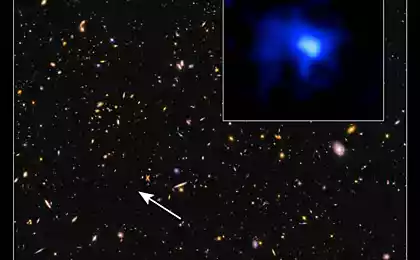839
Crowdsourcing has helped to find a "yellow balls" - a new type of space objects

Fans of astrophysics over the Internet have studied thousands of images from the telescope « Spitzer » and made present scientific discovery. They identified a new class of cosmic objects that are called "yellow balls» (yellow balls), reports a > NASA.
This link between the emerging stars of embryos and newborn stars.
"Once the volunteers have tortured us wonder what are these" yellow balls ", we studied their physical properties and the nature and realized that these objects allow us to trace the birth of the first phases in more light. We can say that the simple question, "hmm, what it is" led us to the discovery, "- said Charles Cureton (Charles Kerton) from Iowa State University in Ames (USA).
The study is a part of crowdsourcing project Milky Way classification of objects in our galaxy at infrared images with the "Spitzer". The project is part of a larger initiative Zooniverse.
Today volunteers are already classified 1513131 object, including found 582781 bubble of gas that is blown young stars. At some point in the project forum discussion focused on the obscure objects that are called "yellow balls." The question was, take their gas bubbles or not.
Scientists are interested in the question - and also drew attention to these objects. Careful study showed that in fact it is not a bubble, but a very large stars that are just beginning to be born. Due to the large number of grains of aromatic hydrocarbons in the surrounding gas cloud becomes "green" tint in the infrared range that mixed with red gives the impression of yellow. Over time, "yellow" cloud becomes a typical "red" in the infrared.

Volunteers have been able to find about 900 such objects in the pictures "Spitzer". Now we need to analyze their distribution to more accurately determine the nature of the phenomenon.
The Internet community continues to classify objects in the universe. Thanks to the efforts Zooniverse published more than 70 scientific papers.
Source: geektimes.ru/post/244978/
Painting fingers for 30 seconds
Scientists have discovered another star five ancient Earth-like planets























